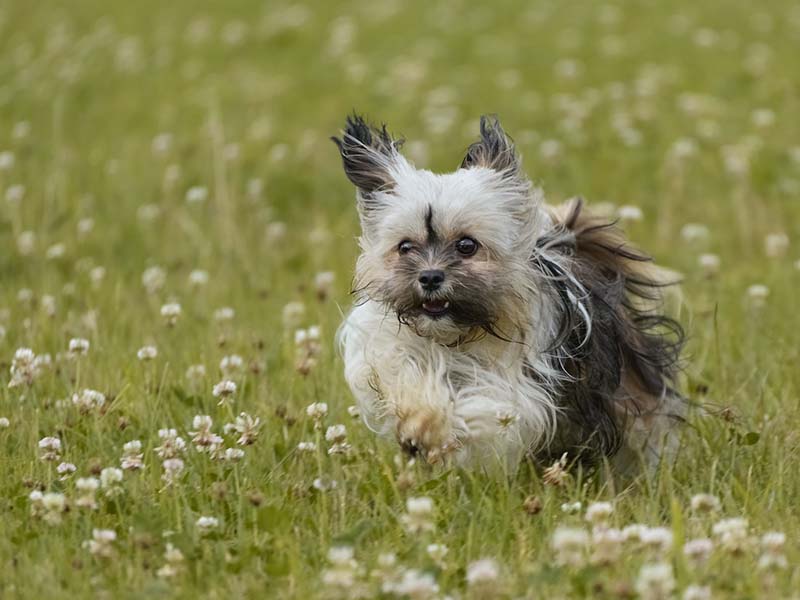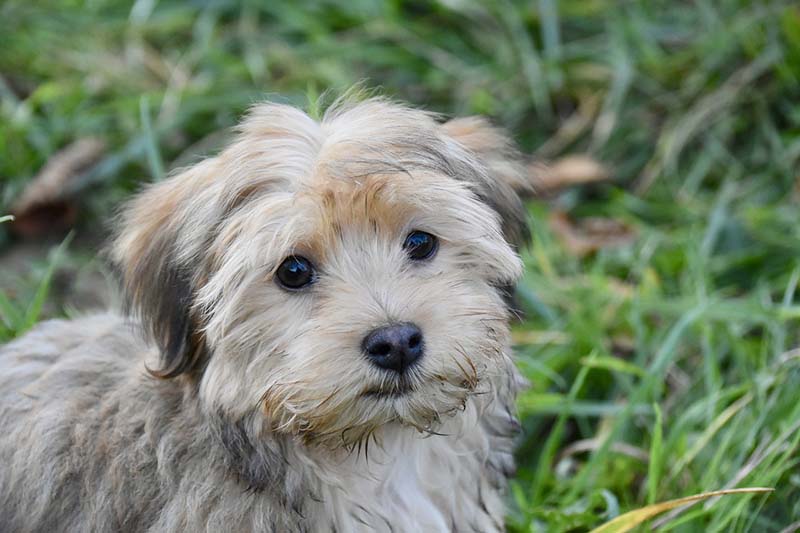Havanese dogs (once known as Havana Silk Dogs) are playful, intelligent, and gorgeous. But one feature that singles them out among other dog breeds is the ability to change color as the pet grows.
In puppyhood, a Havanese may have a particular color and register a different color in adulthood. As the pet grows, its color may lighten, darken or change pattern before reaching full maturity.
The color change in the Havanese dog is normal but unpredictable. Although the color change shouldn’t be a cause for worry, it perplexes many people.
Hence, why do Havanese change colors?
Why Do Havanese Change Color?
As the dog breed grows from a puppy to adulthood, Havanese registers change in coat color. There are several genes in the dog that dictate color change. For that reason, it’s hard to predict color change.
When the genes are stronger in a Havanese the color change is drastic. However, when they are weaker, the change becomes subtle.
Do All Havanese Change Color?
A significant number of Havanese dogs change their color, but a few don’t. Many experts and dog owners agree that dark Havanese is almost sure to change color more than one with a lighter color.
Most of the color change in the dog breed occurs in the puppy stage. As the pet sheds the puppy coat and welcomes another coat, a color change occurs. On that note, a dark-colored Havanese puppy is more likely to register a big change in color than a light-colored puppy.
Besides the Havanese color getting darker or lighter, it may change completely to assume a different appearance.
For that reason, the Havanese dogs can take different colors or combinations. That includes chocolate, cream, silver, white, red, or a combination of those colors.
Can You Predict the Color Change in a Havanese Dog?

As outlined before, the color change in a Havanese is dependent on several genes (about 10 types of genes). Therefore, it’s very hard, almost impossible to predict. The genes may affect the appearance of the Dog in the following ways:
- Change in color pattern
- Darkening of the colors
- Lightening of the colors
But from experience here is how the change is likely to affect different puppy colors;
Solid Black Havanese Coat
A solid black coat of a Havanese puppy is less likely to change as the pet grows.
Solid White Havanese
A Havanese puppy with a solid white coat may register a slight change or maintain its color. Hence if a drastic color change is more likely to annoy you, a solid white puppy makes a viable choice as a pet.
Cream Coat
A Havanese with a cream coat is almost certain to change. The color may lighten or darken
Silver Coat
Silver coats do change drastically with time. It, therefore, isn’t a wise choice for those who mind about color change in the Havanese dog breed. It may darken or lighten extremely.
Gold Coat
Although the gold often lightens, in some cases the coat retains its color throughout.
Multicolored Coat
A coat with varying colors is likely to change. With time, you’ll find some colors getting darker and others growing light. In the end, it registers a different appearance.
Spotted Coats
As the puppy grows, the spotted coat is more likely to register drastic color variation. The spots may either fade out or drift from the original tone.
At What Age Does the Havanese Begin to Change Color?
When the color change begins is dependent on the genes. That is there is no precise time that Havanese must begin to change color.
But generally, the color change begins when the puppy is about 3 months old. Nevertheless, you can’t notice a remarkable change day by day.
However, after a few months, you’ll spot a substantial difference in appearance.
When Does the Color Change in Havanese Stops?
In most cases the change ceases at nine months, however, it can also go on till the dog reaches three years. At 2 or three years (maturity) the dog has its final coat color.
But just like human hair grows white with old age, Havanese are no exception. As the dog gets older the coat color grows lighter.
Still, other factors such as genes and grooming quality, affect a dog’s coat color. So, it’s very hard to predict the exact time when color change begins and ends on the Havanese coat.
FAQs

Do Havanese Eyes and Nose Change Color Too?
As the coat color changes so do the eyes and nose. Many Havanese dogs have brown eyes (though with varying shades). Chocolate Havanese usually have blue eyes at the puppy stage.
As it grows the eyes may darken and eventually become brown at the full maturity stage. The nose of the dog breed also shifts from dark to light brown or even pink.
Can a Black Havanese Turn White?
No, a black Havanese puppy can not turn white in adulthood. Instead, the white coat may get brighter or dull.
Why Do Havanese Turn White?
Havanese can turn white or darken as they grow from puppy to mature. The color change is entirely dependent on genetics.
Therefore, Why Do Havanese Change Colors?
The Havanese dog breed changes color because of the gene characteristic of the pet. Mostly at around 3 months after birth the color alteration gradually begins to take effect.
After a couple of months, the changes are obvious even to the unsuspecting eyes.
The color change doesn’t follow a particular preset pattern. The original color can get lighter, darken, or change patterns (in the case of a multicolored coat).
Regardless of the alteration of color, Havanese dogs are adorable. And in case you need a Havanese dog that may register a minimal change in color, settle for a solid white or solid black coat.
